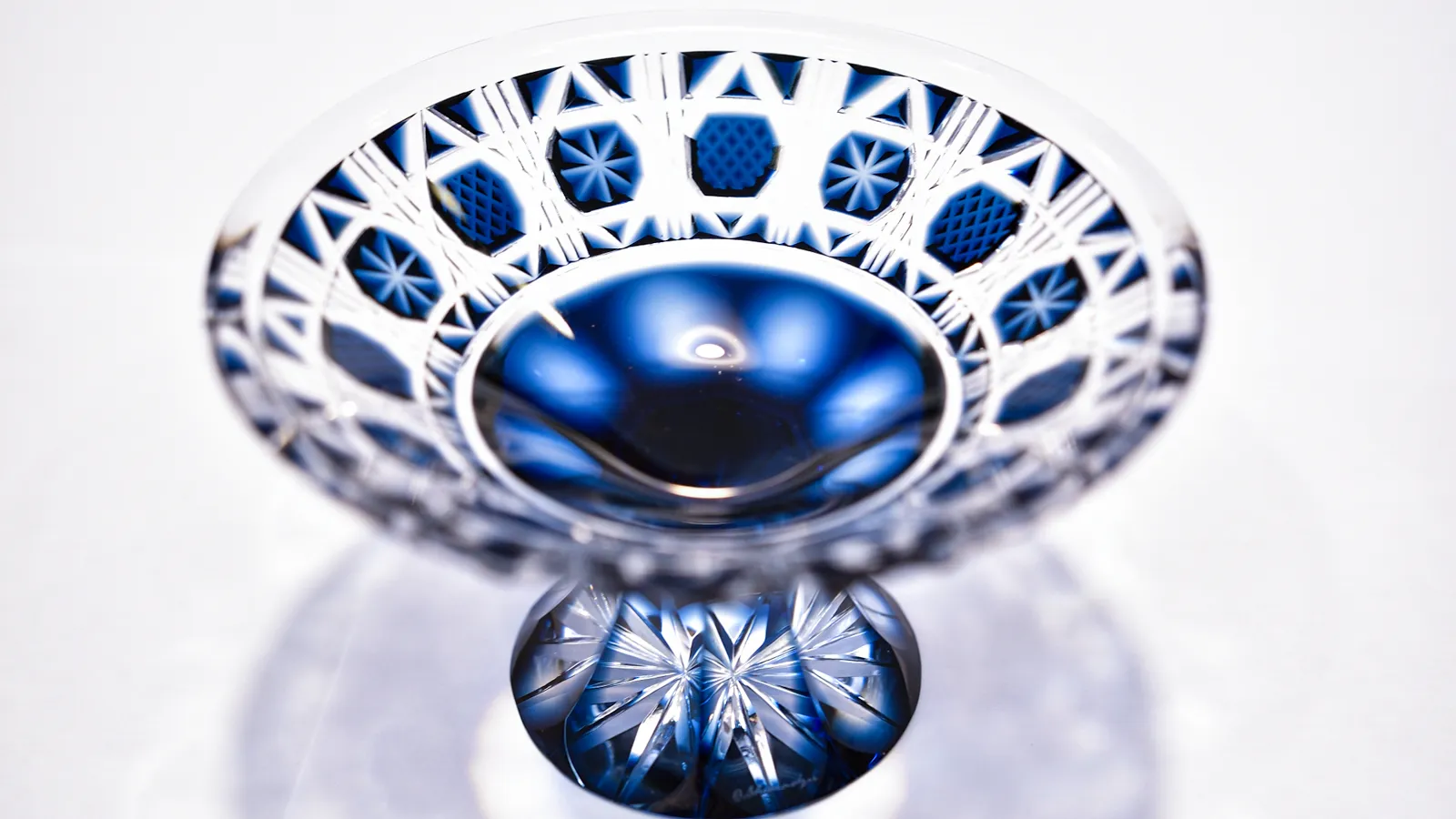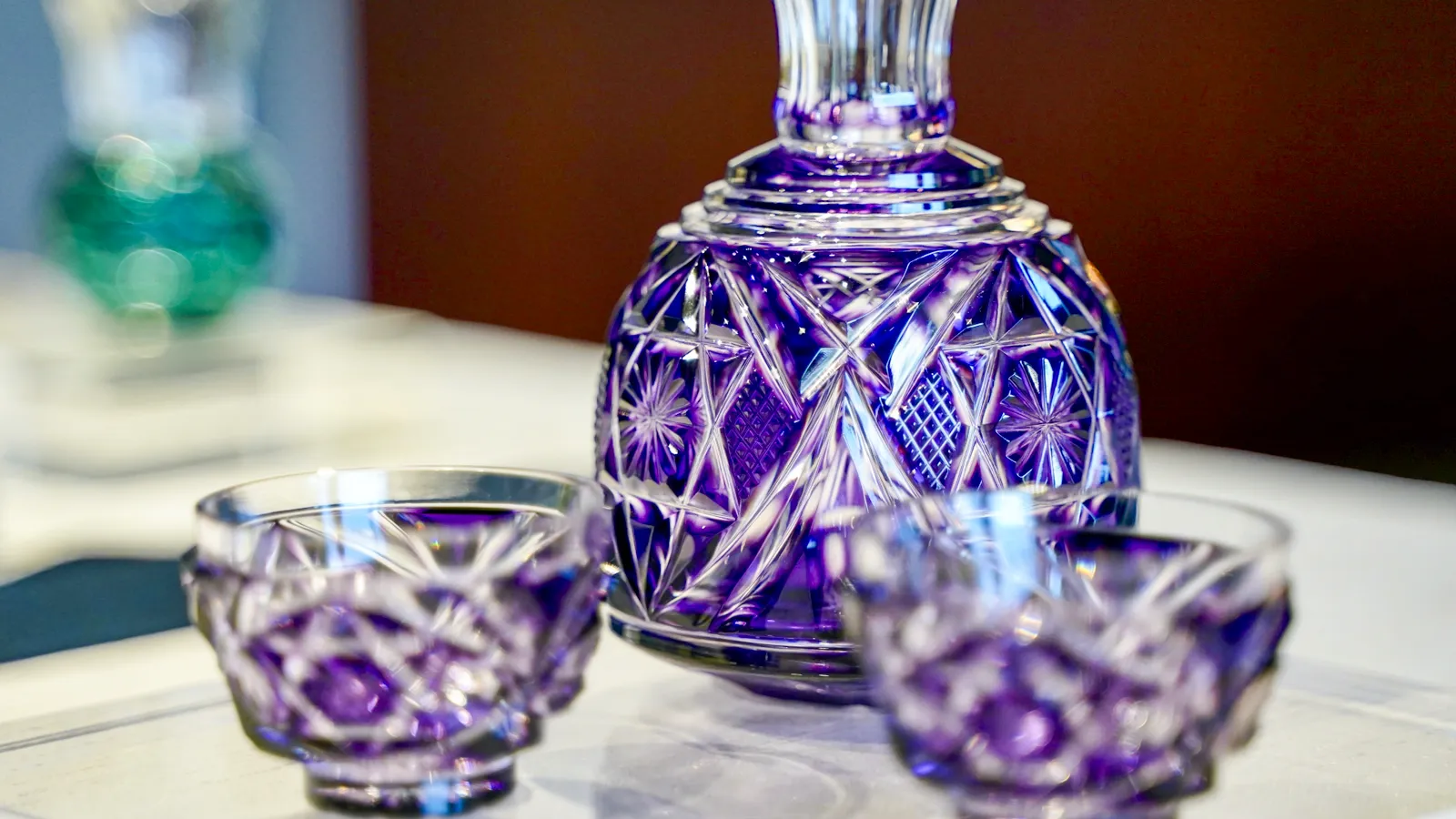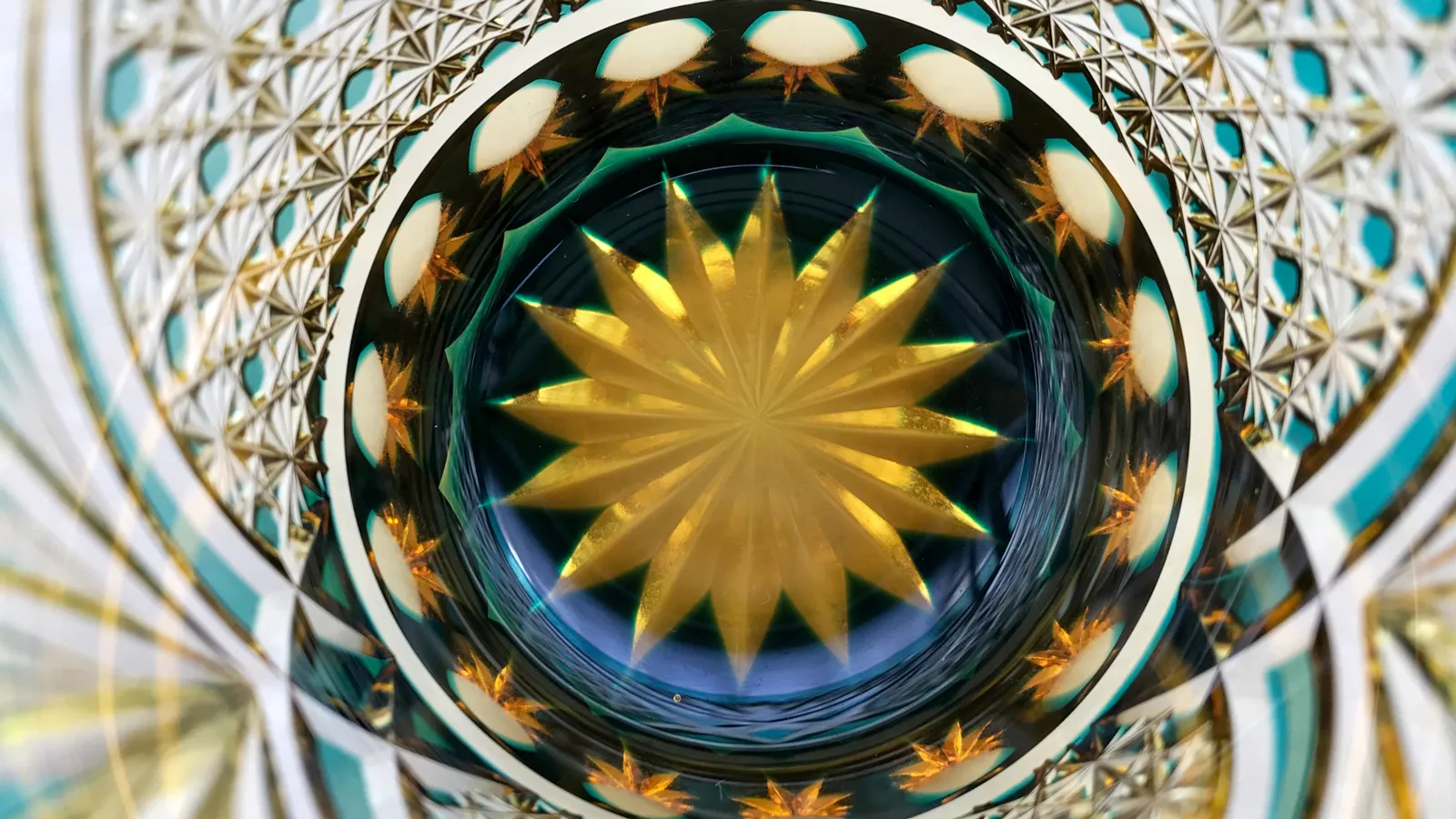Edo Kiriko and Satsuma Kiriko are renowned Japanese glass crafts, but many people might not know exactly how they differ. In this article, we’ll delve into the history and characteristics of these two iconic Japanese glass art forms: “Edo Kiriko” and “Satsuma Kiriko.”
By reading this article, you’ll gain a deep understanding of the historical background and technical differences between Edo Kiriko and Satsuma Kiriko, appreciating the unique charm of each. If you’re torn between purchasing Edo Kiriko or Satsuma Kiriko, this guide will help you make an informed decision.
Table of Contents
What are Edo Kiriko and Satsuma Kiriko?
Edo Kiriko

Edo Kiriko originated in Edo (present-day Tokyo) around 1834 during the Edo period. Initially, it used clear glass with decorations applied only through cutting. As the technique evolved, artisans began using crystal glass and colored glass to create stunning pieces.
Edo Kiriko is known for its intricate and delicate cut patterns, particularly diagonal lattice designs and nanako (fish roe) patterns, which showcase its complex craftsmanship.
Satsuma Kiriko

Satsuma Kiriko’s history began in 1846 when the lord of the Satsuma domain (present-day Kagoshima Prefecture), Shimazu Nariakira, introduced Edo’s glass-making techniques to Satsuma. The glass-making techniques in Satsuma rapidly developed, leading to the creation of the colorful Satsuma Kiriko we know today.
The hallmark of Satsuma Kiriko is the “iro-kise” technique, where a thick layer of colored glass is laid over clear glass. Deep cuts are then made into this layer, creating beautiful gradients. This method produces a stunning “bokashi” effect, where colors fade gradually, which is highly prized in Satsuma Kiriko.
While both Edo Kiriko and Satsuma Kiriko are representative Japanese cut glass crafts, Edo Kiriko is admired for its intricate patterns on clear glass, while Satsuma Kiriko is celebrated for its color gradients and blending effects. Each possesses a unique beauty in the world of glass art.
Three Major Differences Between Edo Kiriko and Satsuma Kiriko
Edo Kiriko and Satsuma Kiriko, while both exemplary Japanese cut glass crafts, have distinct characteristics. Here are the three main differences:
- Glass thickness and texture
- Cutting techniques and design
- Intended use
Difference in Glass Thickness and Texture
Edo Kiriko uses thin, transparent glass with sharp cuts, resulting in a light, airy feel with high transparency. The precisely cut surfaces reflect light, creating a clear, brilliant sparkle.
In contrast, Satsuma Kiriko employs thick “iro-kise” (color-coated) glass. Deep cuts into the glass layers produce beautiful gradients (bokashi) on the cut surfaces. This technique gives Satsuma Kiriko a softer texture with more depth compared to Edo Kiriko.
Difference in Cutting Techniques and Design
Edo Kiriko’s cutting technique focuses on intricate, linear patterns. Designs often feature detailed, precise patterns like diagonal lattices or chrysanthemum motifs, where the cuts themselves are the main design element.
Satsuma Kiriko, using color-coated glass, emphasizes techniques that bring out soft color transitions through gradients (bokashi). The interplay of colors and the changes in hue across cut surfaces highlight the design’s beauty. Copper red glass is particularly famous in Satsuma Kiriko.
Difference in Intended Use
Edo Kiriko products often prioritize practicality for everyday use, with many pieces designed as drinking glasses or sake vessels. Their durability and ease of use make them popular as daily items.
Satsuma Kiriko, on the other hand, is highly valued as fine art. Its delicate cuts and color variations make it popular for display purposes. Notably, Satsuma Kiriko production was interrupted by the Anglo-Satsuma War of 1863 and is being gradually revived today.
As a result, restored pieces are popular among collectors and are often treated as art objects.
Edo Kiriko is admired for its functionality and intricate cuts, while Satsuma Kiriko is prized for its color beauty and elegant bokashi technique. Both are highly regarded as representative traditional Japanese crafts, each offering unique aesthetic pleasures.
History and Technical Characteristics of Edo Kiriko
Edo Kiriko, alongside Satsuma Kiriko, is one of Japan’s premier glass crafts, known for its precise cuts and unique transparency. Let’s explore its history and technical features in detail.
History and Origins of Edo Kiriko
Edo Kiriko is said to have originated in 1834 when an artisan named Kagaya Kyubei carved the surface of glass in Edo’s (present-day Tokyo) Odenmacho district. Influenced by Western cut glass techniques, Kagaya Kyubei established a unique Japanese glass carving method.
While the craft briefly declined during the late Edo period, it saw a resurgence after World War II with increased domestic and international demand. The term “Edo Kiriko” was standardized during this revival. In 1985, it was designated as a Traditional Craft of Tokyo, and in 2002, it received national recognition as a Traditional Craft by the Minister of Economy, Trade and Industry. It continues to be highly valued today.
Edo Kiriko Design and Cutting Techniques

The hallmark of Edo Kiriko lies in its complex and precise cutting techniques. Notable patterns include “kiku-tsunagi” (linked chrysanthemums), “nanako” (fish roe) patterns, and “rokkaku-kagome” (hexagonal basket weave). These designs often incorporate auspicious meanings or traditional symbolism, with artisans meticulously cutting the glass surface to create beautiful reflections.
Edo Kiriko often uses “iro-kise” (color-coated) glass, where a thin layer of colored glass is applied over clear glass. This technique creates a striking contrast between the colored and clear glass, resulting in rich color variations through light refraction and allowing for different visual effects depending on the viewing angle.
Each workshop has its unique techniques and specialties. For instance, some finish their pieces through hand polishing without using acids, showcasing the craftsman’s skill in even the finest details. This meticulous hand-polishing contributes to Edo Kiriko’s distinctive luster and transparency.
Edo Kiriko continues to be highly regarded both in Japan and internationally for its technically challenging cuts and refined designs.
Characteristics and Appeal of Satsuma Kiriko
Satsuma Kiriko is one of Japan’s most beautiful glass crafts. Its distinctive design and advanced techniques, though once lost to history, have been revived in modern times and are highly valued both in Japan and abroad.
Below, we’ll explore the history and main features of Satsuma Kiriko.
History and Uniqueness of Satsuma Kiriko
Satsuma Kiriko was developed in the mid-19th century when Shimazu Nariakira, the lord of the Satsuma domain, incorporated Western techniques into glass-making. As part of the domain’s economic reforms and industrial promotion, colored glass technology advanced, giving birth to vibrant “red,” “indigo,” and “green” colored glasses.
However, after Nariakira’s death, the production ceased due to events like the Anglo-Satsuma War, which led to the destruction of workshops. In 1985, efforts to revive the lost art of Satsuma Kiriko began, bringing it back to life in the modern era. Today, it’s once again appreciated for its beauty, blending traditional techniques with new methods.
Satsuma Kiriko Design and Cutting Techniques
The hallmark of Satsuma Kiriko is the “iro-kise” technique, where a thick layer of colored glass is laid over clear glass and then deeply cut. This method creates beautiful gradients (bokashi) on the cut surfaces.
The smooth transition of color intensity and the varied expressions created by light reflection are Satsuma Kiriko’s greatest charms. In modern times, new techniques like double-layer coating have been developed, producing an even richer variety of color variations.
Satsuma Kiriko is highly valued as an art form, with many pieces in high demand among collectors.
Conclusion: Choosing Between Edo Kiriko and Satsuma Kiriko
Both Edo Kiriko and Satsuma Kiriko are premier Japanese cut glass crafts, each with its unique appeal. When choosing between them, consider your purpose and preferences.
For instance, Edo Kiriko excels as practical glassware and sake vessels for daily use, combining functionality with beautiful decorations. It’s ideal for those who appreciate intricate patterns and high transparency.
On the other hand, Satsuma Kiriko is highly valued as fine art, popular for special gifts or as collector’s items. It’s perfect for those who prioritize rich colors and artistic presence.
Given these distinct characteristics and charms of Edo Kiriko and Satsuma Kiriko, it’s recommended to base your choice on the intended use and your design preferences.




